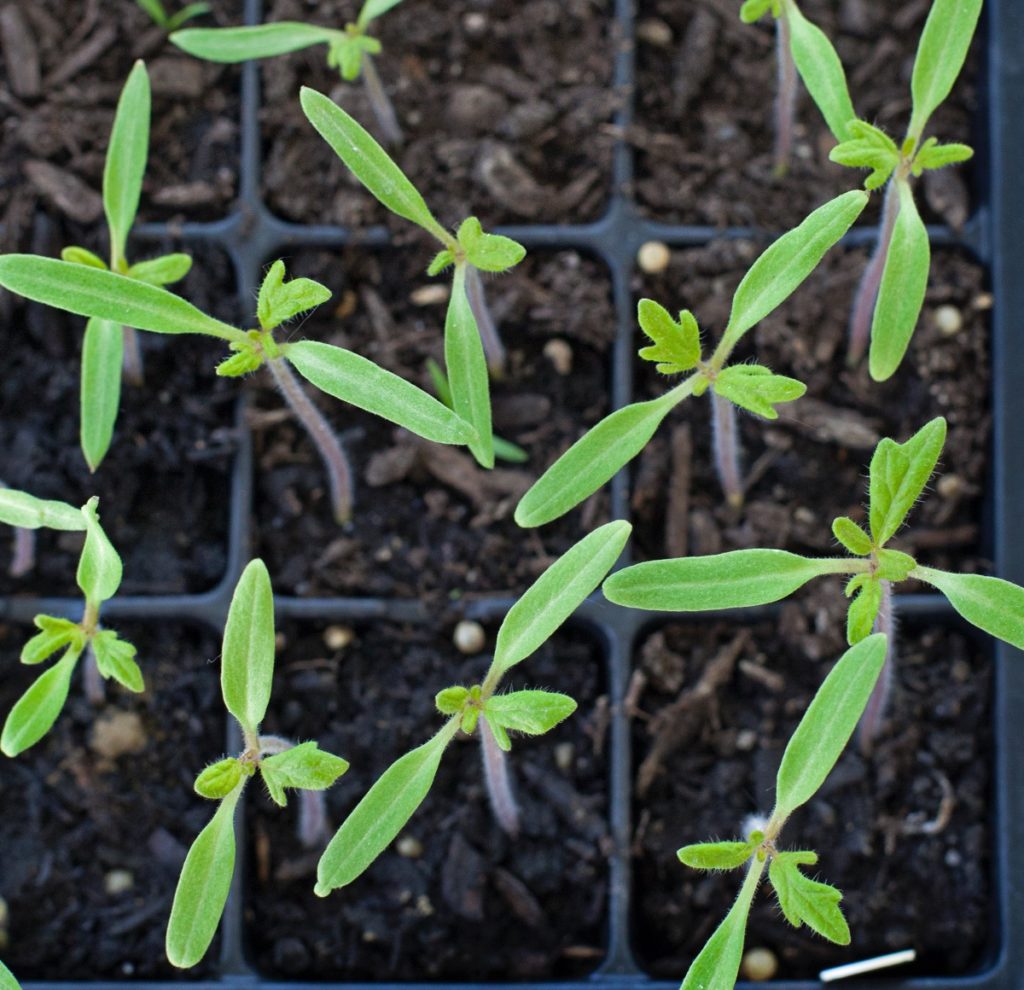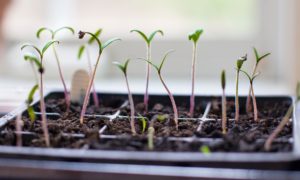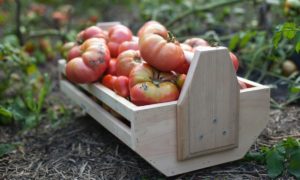Up until this point in your tomato growing journey you have fussed over and doted on these seedlings as if they were your babies. You started them from seed and nurtured them to help them grow big and strong. Now, I’m going to tell you that you have to pick the strongest and best ones and cut out all the rest. Yes, I said it. This process is called thinning your seedlings and it is unfortunately necessary. I know, I know. All that work, all that doting, and now you have to remove the weak ones so that the strong can thrive.
Now, honestly I don’t like doing this. No one does! I hate having to cut out perfectly healthy tomato seedlings because there is another one a little bigger or healthier looking. But guess what? That’s why you plant so many seeds per cell. You want the best of the best! The purpose of planting 2-3 seeds per cell is to ensure that you end up with one strong healthy seedling in each. Survival of the fittest in action.
The process of thinning seedlings is quite easy. You pick the strongest seedling in the cell, and then cut the others at the soil level with scissors. This will allow the strongest to grow without any competition. I do not recommend pulling the seedlings out, as at this point the root systems are very fragile and if the roots are connected to the one you’re keeping it could pull it up as well. Snipping them off at the soil line is the quickest method and ensures you don’t cause any damage to the ones you’re sparing.
Who Stays and Who Goes?
So how do you determine which seedlings are weak and which is the strongest? First you want to just go by general look. If one obviously looks weak or sickly in comparison to the others then snip it. Aside from that there are some general things to look for if it isn’t immediately obvious:
Stems
- If the stem of the seedling looks thin in comparison to some others, then this is a good indication of a weaker seedling. Thin stemmed seedlings don’t transplant well outside because they aren’t strong enough to withstand the elements.
- If the stem tapers as you get closer to the soil line this is an indication of inconsistent watering (over or under) and again is a sign it should be snipped.
- The straightness of the stem is something that I take into consideration as well. Some have a tendency to grow curved or wavy and I will always choose a straight stem in leu of these.
- If all of your seedlings have thin stems, then I would move what you have left after you thin outside during the day (weather permitting) as much as you possibly can. Put them in a well lit area but not under direct sun as this can burn the seedlings. The stems will thicken and get stringer when they are subjected to a breeze. If you can’t move them outside, then put a fan on them on low a few hours a day for the same affect.
True Leaves
The first oval shaped leaves that appear on a seedling are called cotyledons or “seed leaves”. The second set of leaves that appear after the cotyledons are referred to as the “true leaves” . These leaves look like miniature versions of the plant’s mature leaf and are more decorative in shape.

- Presence of true leaves is an indication that the seedling is further along and getting the basic requirements to grow. Their presence alone however doesn’t necessarily mean it is the strongest seedling. Seeds germinate at different rates, and it may have been a late bloomer. The stems should be the primary factor in determining weaker seedlings, then take into consideration the presence of true leaves secondary. This is why I always wait until the true leaves come in before thinning.
Height
- This is not something I take into consideration or get too worked up about unless the seedlings are identical in terms of their stem thickness and presence of true leaves. Just because it is taller in no way means it’s stronger. Some of my best tomato plants have come from short and stalky seedlings. In fact, leggy seedlings tend to be very tall, and don’t do well outside because they’re weak.
Everyone has heard the saying “do as I say not as I do“. I said that the reason that you plant so many extra seeds is so that you can thin them and get the best of the best. Yes, this is true and although I do not “recommend” separating seedlings because the root systems really are quite fragile and you can end up killing all of the ones you’re trying to save… I do it. Every year I have a few in the same cell that are textbook perfect and I can’t bring myself to choose just one.
If you’re going to go against what I say, and do what I do, just make sure you thoroughly water them first. This will give you the best chance of separating the root systems while keeping them in tact. If the soil is dry forget about it, it will crumble away and you’ll destroy the roots. I also recommend (and actually do this) that you do not try to separate more than two seedlings. With the little soil that there is, your chances are not good you will get a clean separation with soil to protect the roots. If you have two perfect seedlings though and feel like chancing it, I can’t say anything!


Pingback: Caring for Tomato Seedlings | The Modern Day Settler
Thanks!! Exactly the encouragement I needed!
Great advice! I am so excited for my baby “toes” (affectionately names tomatoes) to grow into strong producing plants ?!
Great info! Thanks
I love this advice – thank you!
When thinning, are the tomato seedlings removed edible? Like micro-greens 🤷🏼♂️
Nope, they are not good!